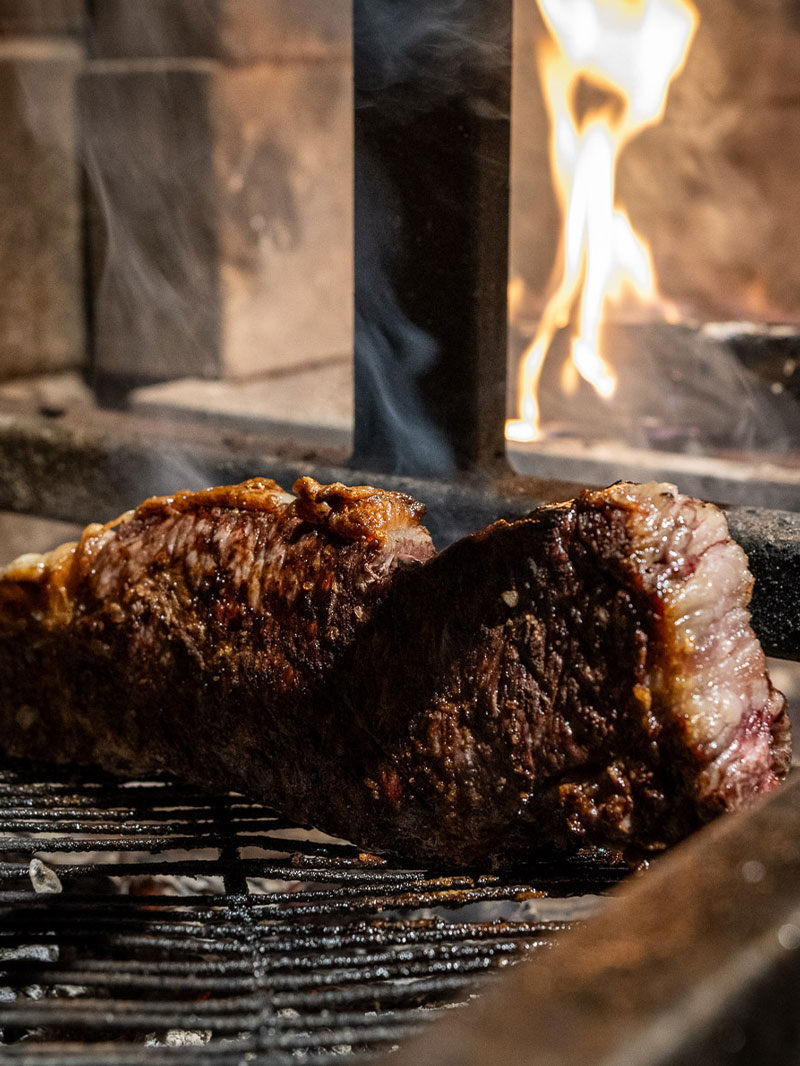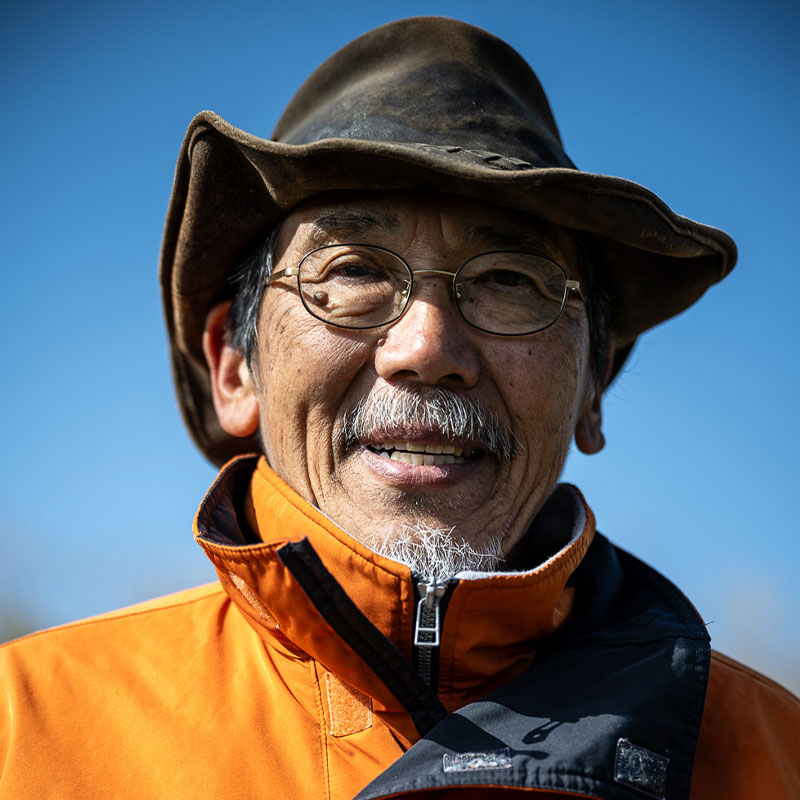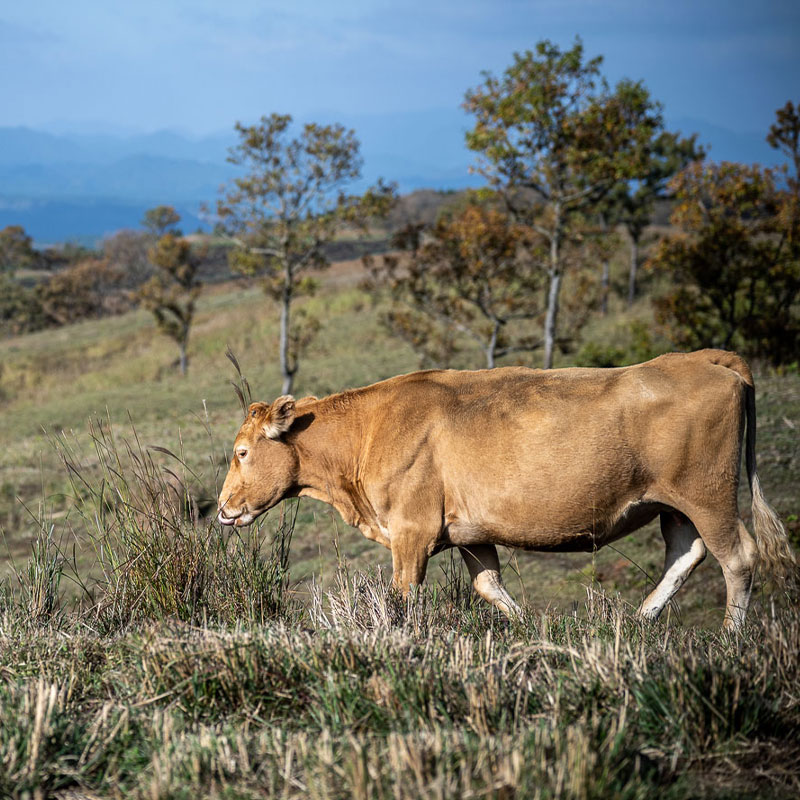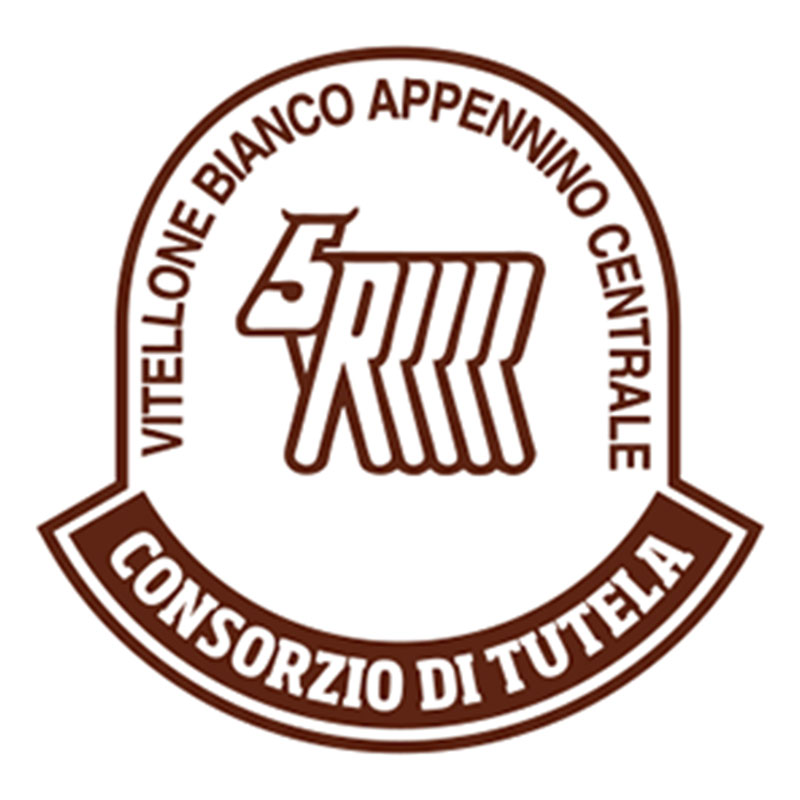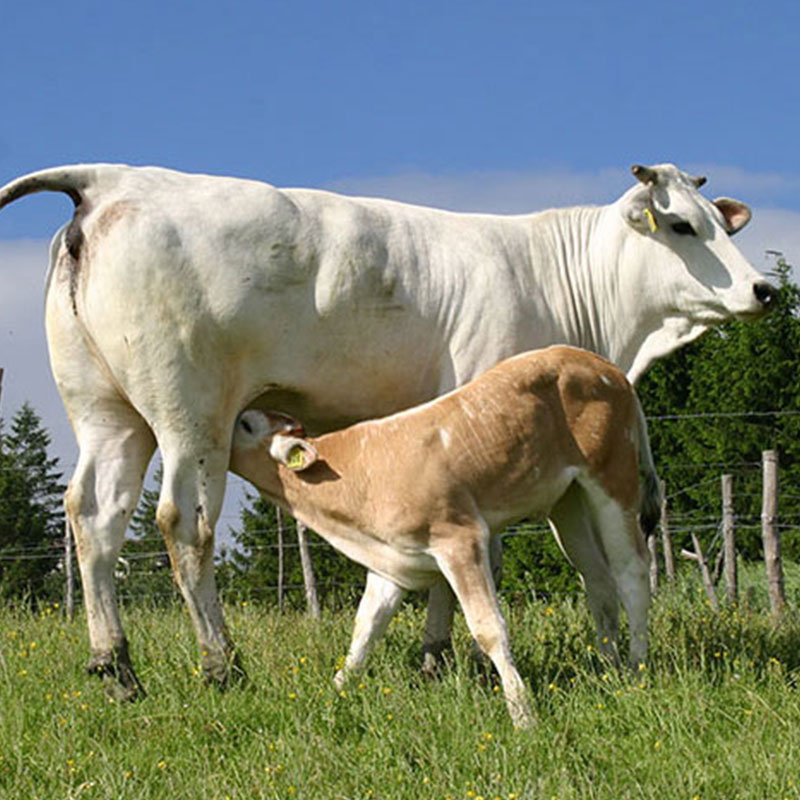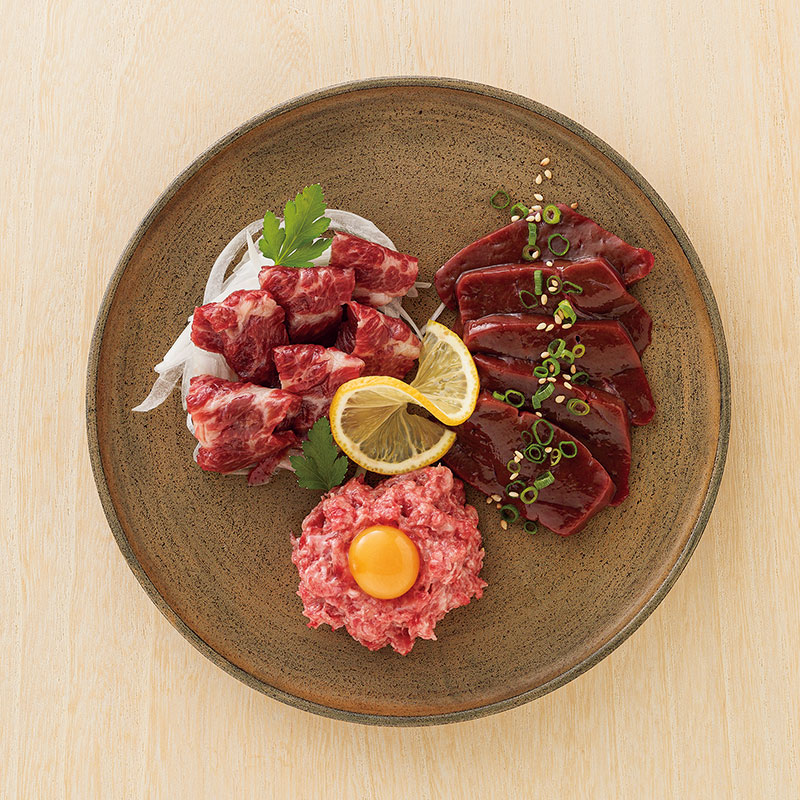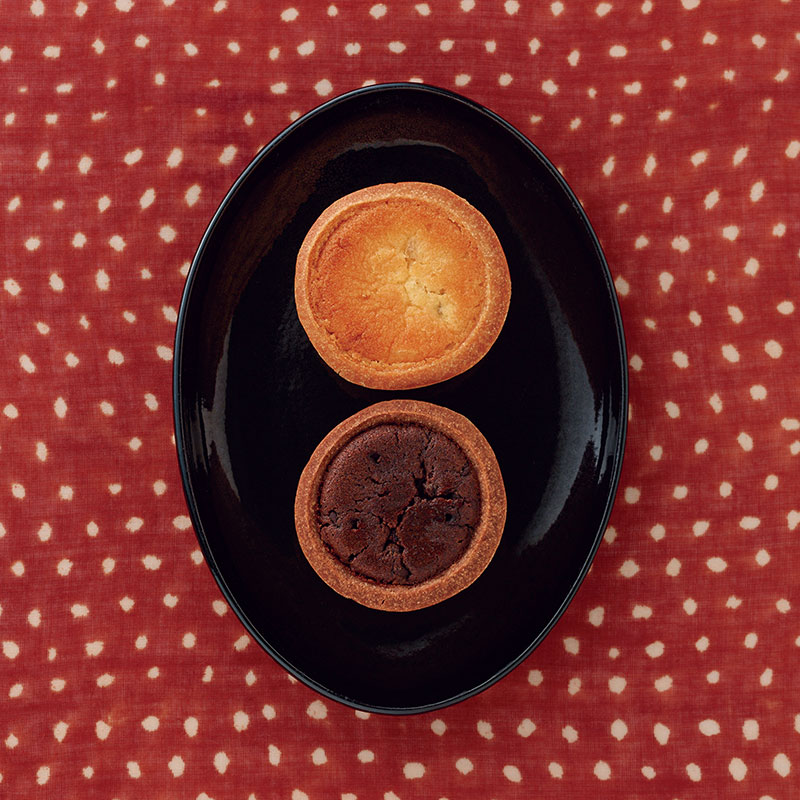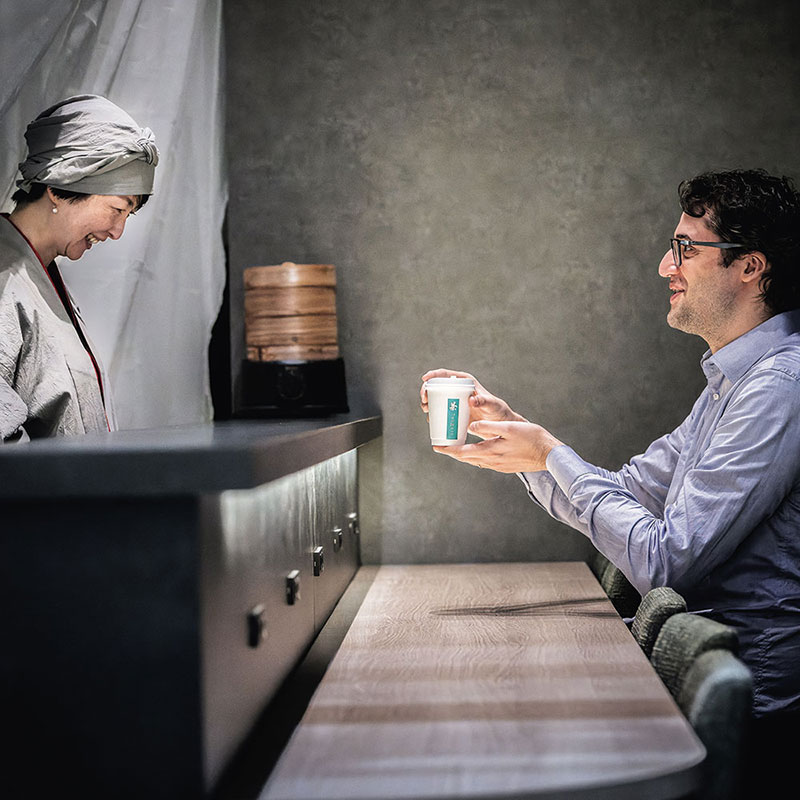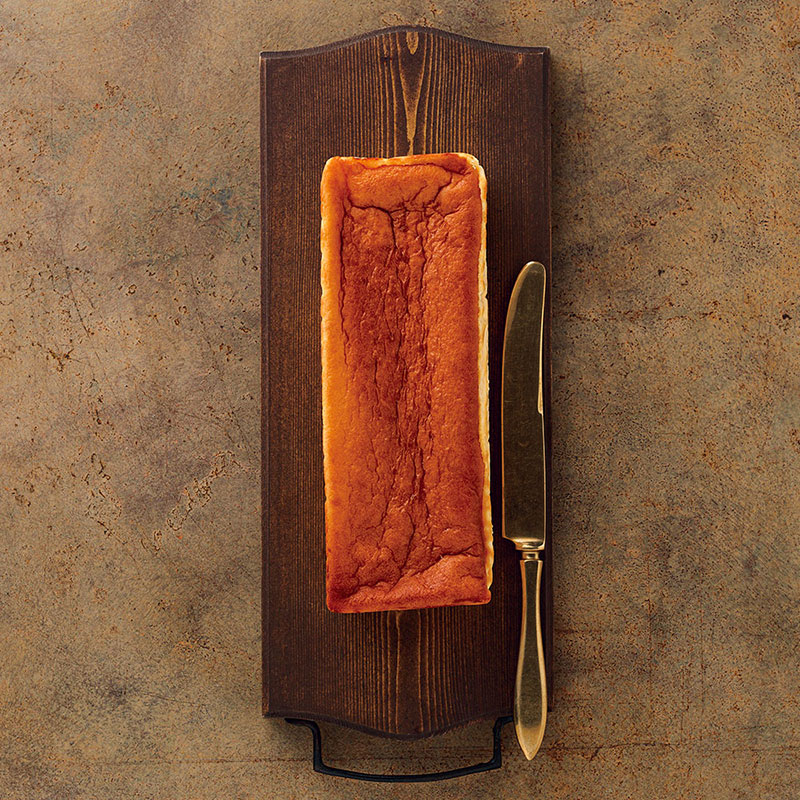The thickly sliced steak, grilled slowly over wood, is so tender and juicy that it is hard to believe it is red meat. It is a work of art that combines the carefully raised red beef with the chef’s ingenuity.
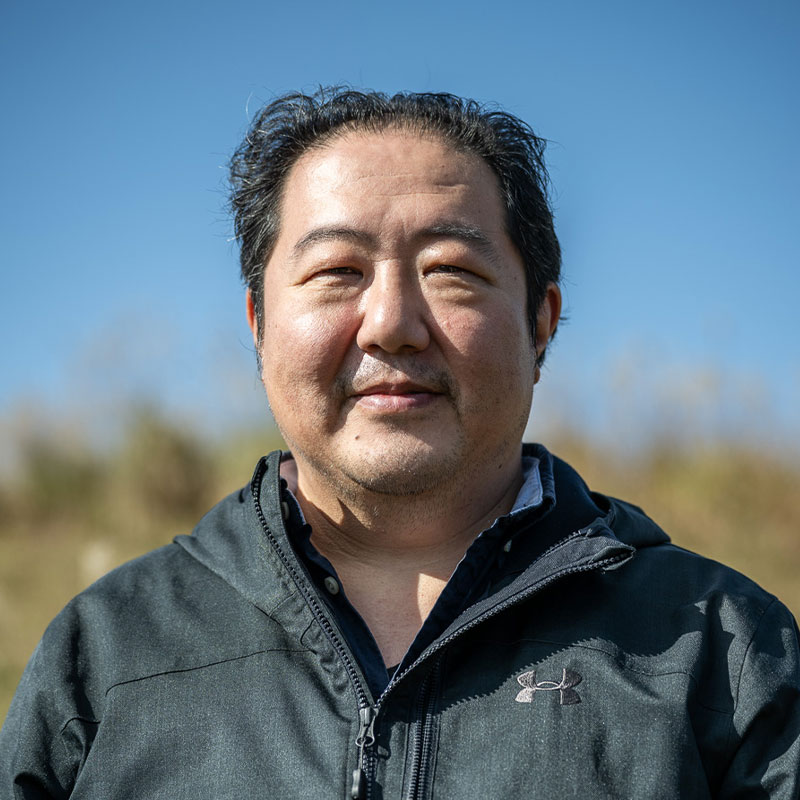
Miyamoto Kenshin
Born in Yamaga City, Kumamoto Prefecture in 1975. His father was the first person to introduce Italian cuisine in Kumamoto, and after traveling to Italy at the age of 19 for culinary training, he opened “Ristorante Miyamoto” in 2006. In 2009, he opened “antica locanda MIYAMOTO” in a quiet residential area along the river in Shinyashiki.

Enrico Croce
Born in Rome, Italy in 1988. He writes articles on Japanese culture and traditions from an Italian perspective. His hobbies are manga, basketball, and wine.
Connect and Live.
Kumamoto’s food connects
people and the land.
Growing up in Rome, Tuscany in central Italy has always been a fascinating place for me. This beautiful region has a particular “color” and “aroma” that not only attracts all visitors, but it also continues to shine as a special place for Italians. Ever since I was a child, every weekend I would enthusiastically suggest to my parents, “Why don’t we go to Tuscany? I always enthusiastically suggested to my parents, “Why don’t we go to Tuscany?
I never thought that I would come across such a memorable Tuscan restaurant in Kumamoto, Japan, far away from Italy.
Anttica Locanda Miyamoto is a restaurant where the chef is Kenshin Miyamoto, who studied Italian cuisine in Tuscany and serves dishes based on traditional Italian cuisine but using ingredients from Kumamoto. The more I listened to Miyamoto-san, the more I reconfirmed that the appeal of cuisine lies not only in its taste, but also in the local history and culture, and the chef’s heartfelt message contained therein. This time, we hope you will enjoy the wonderful world of “Antica Locanda Miyamoto” while feeling the bonds between people and between people and between land and land through food.
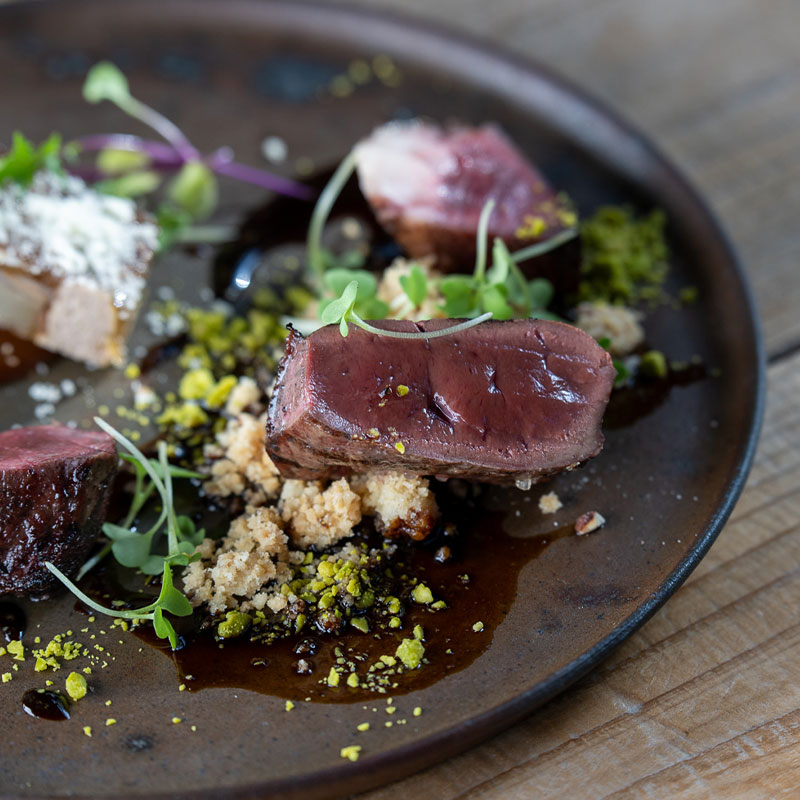
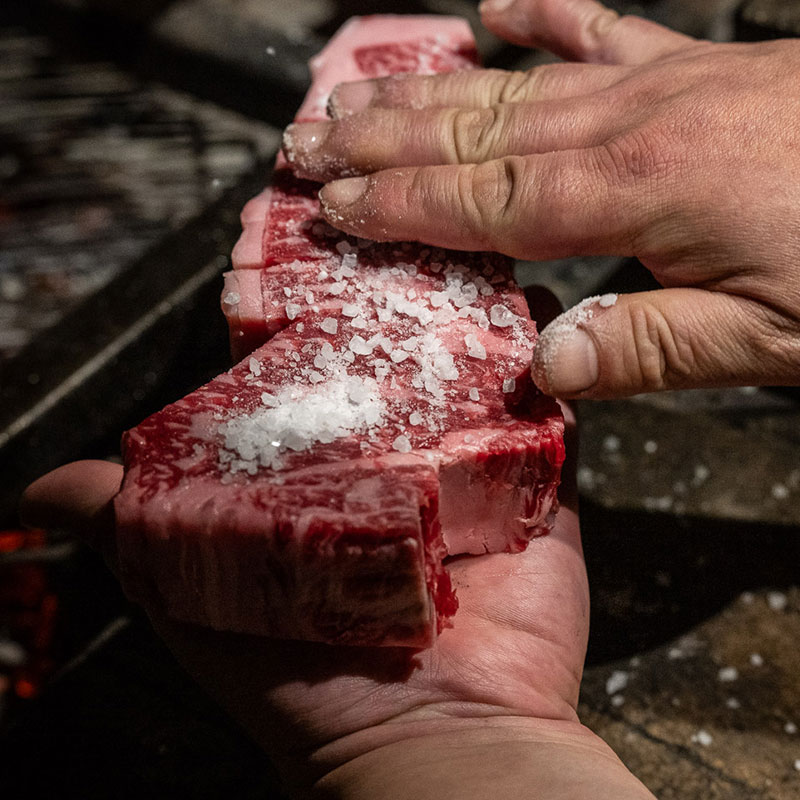
Enjoy the best cuts of beef of the day as decided by the chef on the menu at Antica Locanda Miyamoto. The love and attention to detail for red beef makes for an exquisite dish.
Shorten the distance between you and your customers
to shorten the distance between you and your customers.
The name of the store is a reflection of the desire to shorten the distance between us and our customers.
The restaurant “Antica Locanda Miyamoto” is located in Shinyashiki, an area not far from Kumamoto Castle, where there used to be a series of samurai residences. The beautiful scenery of the Shirakawa River quietly flowing through the town has an atmosphere reminiscent of Rome or Florence at night. In this place where you can experience the history of Kumamoto while feeling the murmur of the river, the restaurant “Antica Locanda Miyamoto” offers simple yet profound Italian cuisine with Kumamoto’s “red beef” as the main ingredient.
The word “antica” means “old-fashioned, historic,” and “locanda” means “inn, azumaya. Unlike words such as “Buono (delicious)” and “Felice (happy),” which are often seen in Japanese Italian cuisine, these words may not be familiar to Japanese people. We asked Chef Miyamoto about the origin of the restaurant’s name and his thoughts behind it.
In Italy and Japan, you often see restaurants with the word “villa” in the name, but the word “villa” or “restaurant” gives an image of luxury and prestige. I wanted my restaurant to be a space where people could relax and enjoy themselves. I also want my customers to enjoy simple and delicious Kumamoto ingredients. I want my customers to feel at ease, as if they were in an inn on a trip. This is the name I gave to my restaurant. After the Kumamoto earthquake and the Corona disaster, I realized once again that spending time together with our customers is my ideal.
Shinyashiki, where the restaurant is located, is surrounded by the Shirakawa River, which springs from Aso, and the Oide River, which was created by Kiyomasa Kato and is still used for agriculture today, and is full of nature and history. That is why we chose the name ‘antica locanda’ (an inn with history).
Once you step into “Antica Locanda Miyamoto,” you will find a refined yet warm atmosphere where you can take a breather. When asked about the restaurant’s interior, we learned that materials from Kumamoto, such as cedar from Ashikita and stone from Misato Town, were used. The space, constructed with local stone and timber just like a traditional Italian countryside restaurant, was created in consultation with a friend, Katsuya Takeda, an interior designer active in Milan.
The space, which recreates the Italian landscape with Kumamoto’s natural materials, evokes a strange combination of newness and nostalgia, and its cozy atmosphere makes it easy to linger for a long time. When he was a child, Miyamoto-san said, “I didn’t want to be a chef. We caught up with him to find out why he chose to become a chef and open this restaurant.
Chef Kenshin Miyamoto
Until it can be done.
My parents were running the first real Italian restaurant in Kumamoto, so they were extremely busy. Seeing them, I thought I didn’t want to do such a hard job. However, studying abroad in Italy when he was 19 years old changed Miyamoto’s desire to cook.
When I studied in Florence, I traveled around Italy and encountered many different cuisines. The first meat dish I had in Tuscany, bistecca, blended well with the red wine chianti, and was a memorable dining experience. Later, I traveled to northern Italy and found a completely different culinary culture than the one I had experienced in Tuscany. In Genoa, I found white wine instead of red wine, fish instead of meat, and pasta that I had never tasted before. I had never tasted pasta before. In Milan, the aroma of butter, not olive oil, pervades the stores. I couldn’t forget the shock of discovering such a rich variety of cuisine from one region to another in the same country, and I started studying because I wanted to learn more about it,” he said.
Eventually, after training at the famous Italian restaurants “La Tenda Rossa,” “La Siriola,” and “Villa Roncalli,” Mr. Miyamoto studied local cuisine in various places from Genoa, world famous for its seafood dishes and basil pesto, to Foligno, where many medieval ruins remain. After returning to Kumamoto, he opened his first restaurant, Ristorante Miyamoto, at the age of 31.
When I was young, I was interested in fusion and modern cuisine, so at “Ristorante Miyamoto” I served both modern and authentic Italian dishes. However, as I gained experience, I gradually became aware of more and more things. After all, there is no end to the modern approach. No amount of layering can compare to dishes made with simple methods, such as bistecca alla fiorentina (Florentine-style T-bone steak) cooked with delicious meat. I have come to believe that simplicity is a very important and difficult aspect of traditional Italian cuisine. Then came the decisive event that changed our policy on ingredients: the Kumamoto earthquake of 2016.”
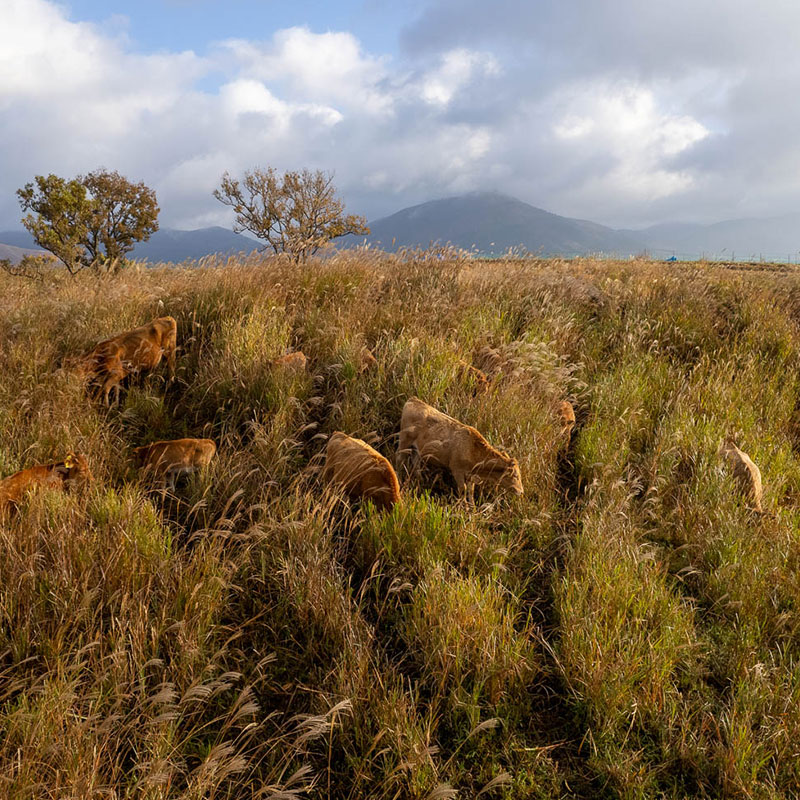
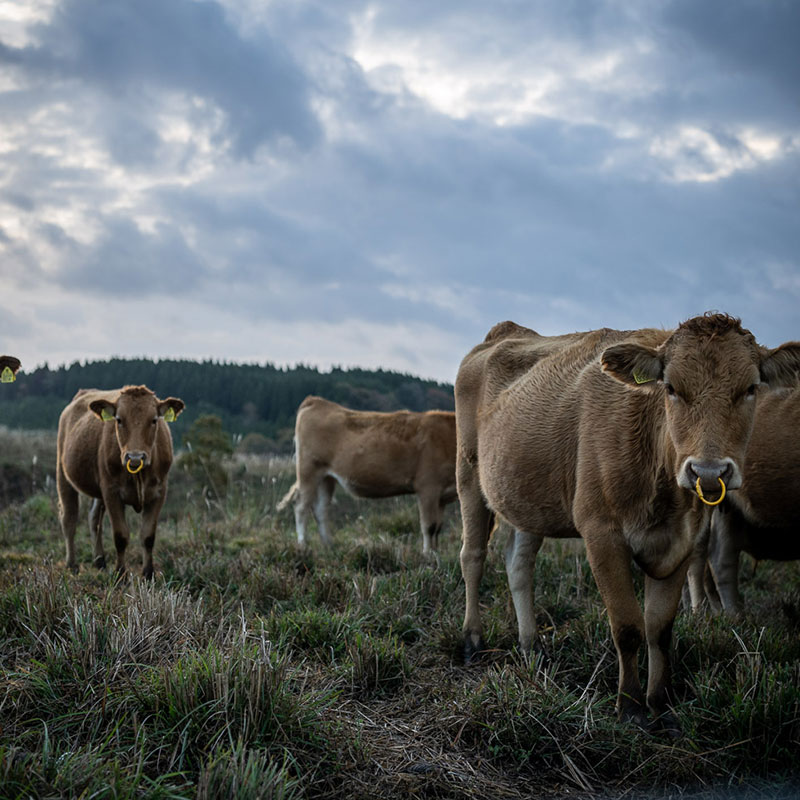
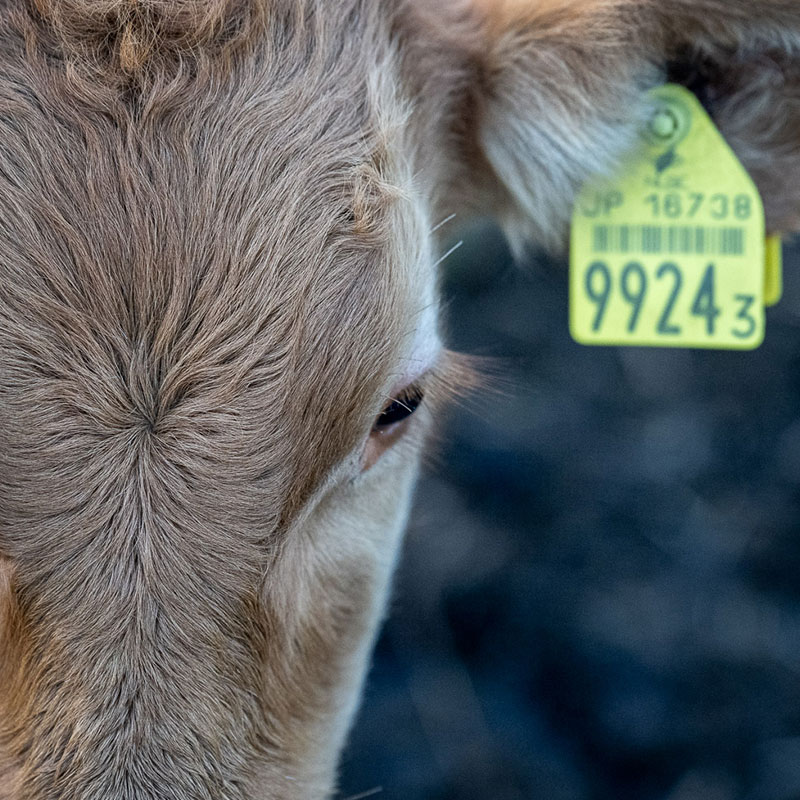
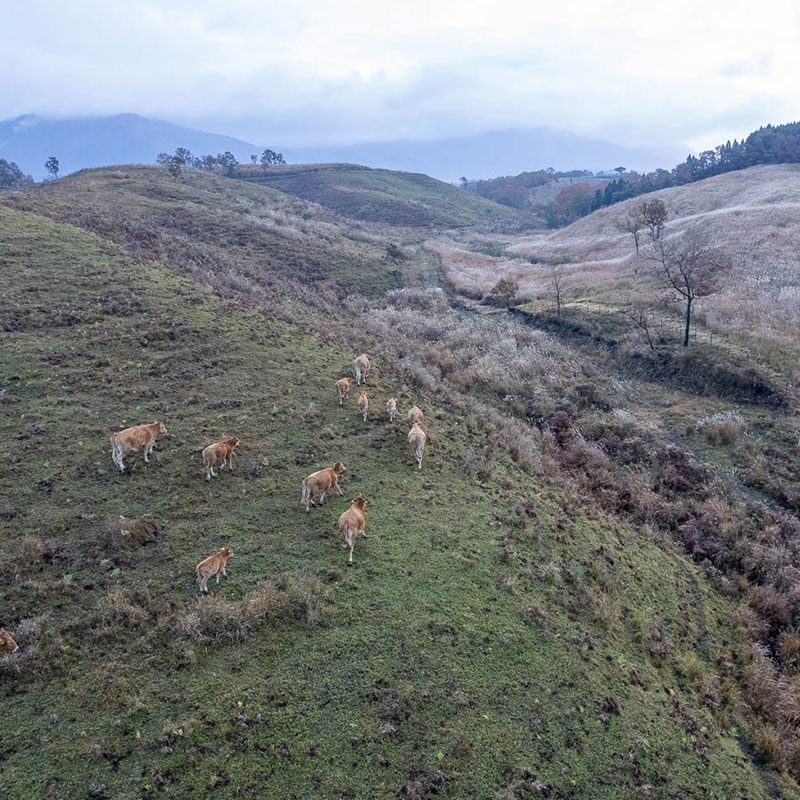
Behind the delicious food is
vast nature and efforts to protect it.
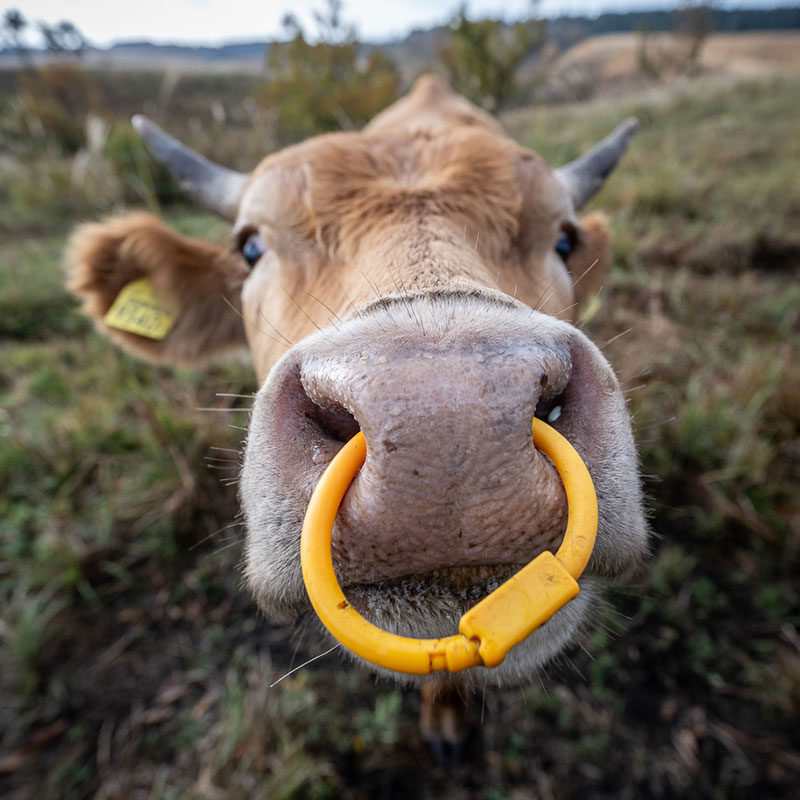
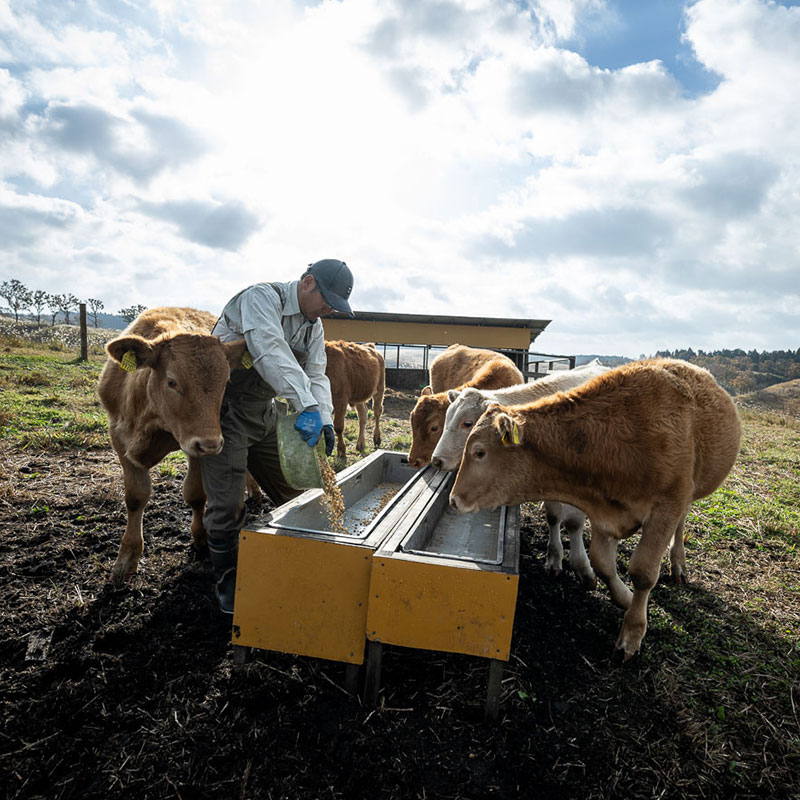
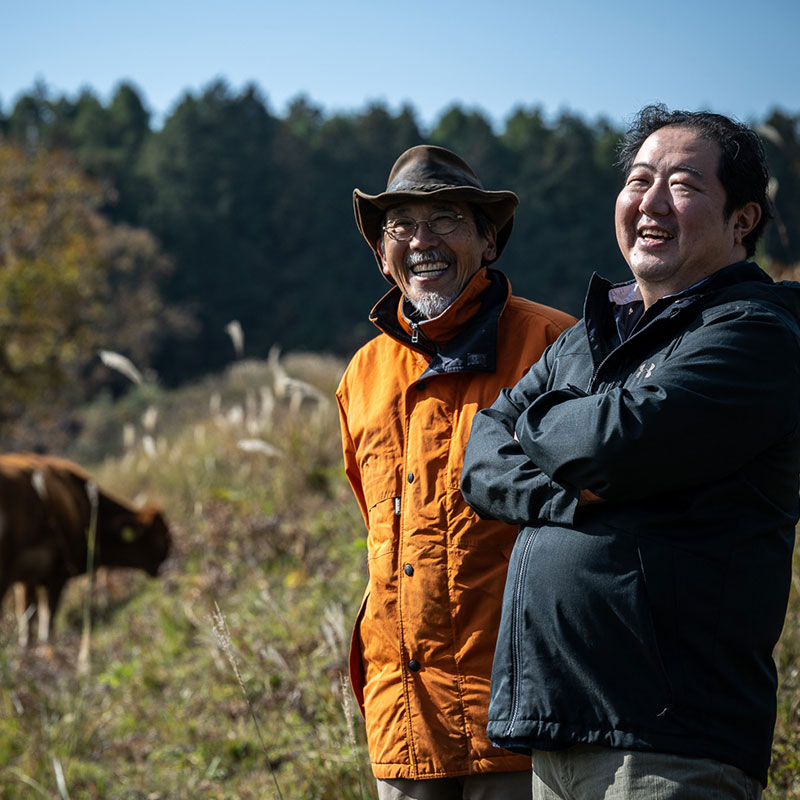
The “Meadow Cattle” ranch is a special place with mountains as far as the eye can see.
mountains as far as the eye can see.
The “Meadow Cattle” ranch is a special place with mountains as far as the eye can see.
mountains as far as the eye can see.
The Kumamoto earthquake knocked out electricity and gas. When I was searching for what I could do as a chef in such a situation, I happened to have charcoal in my restaurant, so I went to a soup kitchen with meat that was grilled in the traditional Tuscan way, which is the starting point of my cooking. When I saw how pleased people were with the meat, I began to realize how important it was for me as a chef to be close to this primitive way of cooking.
One day, Mr. Miyamoto visited a village where 80% of the houses had been completely destroyed. It was spring. He saw onions that had been planted in the area about to sprout upward. He was moved by the sight of the plants emitting a “natural flame,” as if to encourage the people. That is when I made up my mind to value each and every ingredient, and began to think about using natural ingredients to create simple yet delicious dishes.
using ingredients from Kumamoto.
Kumamoto ingredients.
Listening to Mr. Miyamoto’s story, I felt that his passion for the local land and nature is a common link between Kumamoto and Italy. In Italy, since the time of our grandfathers, there has been a way of thinking that food should be prepared using ingredients from farms located close to the home. Through the Slow Food Movement and other movements, this concept gradually became the watchword “Km 0” (kilometer zero). It has become a part of Italian food culture, which believes that the distance between the place of production and the place of consumption should be as close as possible, in other words, Km 0 is ideal. In Japan, we also hear words such as “local production for local consumption” and “micro tourism,” but it is not easy to realize them. However, I feel that “Antica Locanda Miyamoto” has been able to realize local production for local consumption in Kumamoto and support projects that promote it, thanks to Mr. Miyamoto’s strong desire and unique approach (see column on page 7).
There is an Italian food culture called “teritorio. This refers to a local community in which the urban area and the surrounding countryside and farming villages are closely connected and cooperate to form a common economic and cultural sphere that exhibits its own unique characteristics. In “Shoku no Daichi Kumamoto” published in 2015, in which Mr. Miyamoto participated as a planning collaborator and culinary creator, he wrote in detail about the vegetables grown by farmers in each region of Kumamoto Prefecture, and when I read it, I felt Mr. Miyamoto’s respect for “Territorio”.
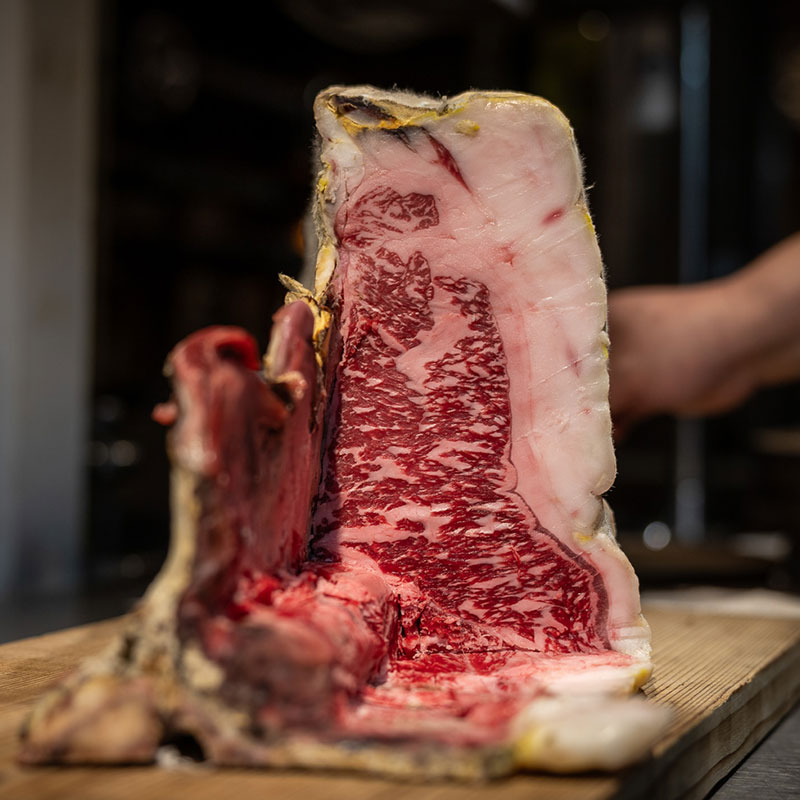
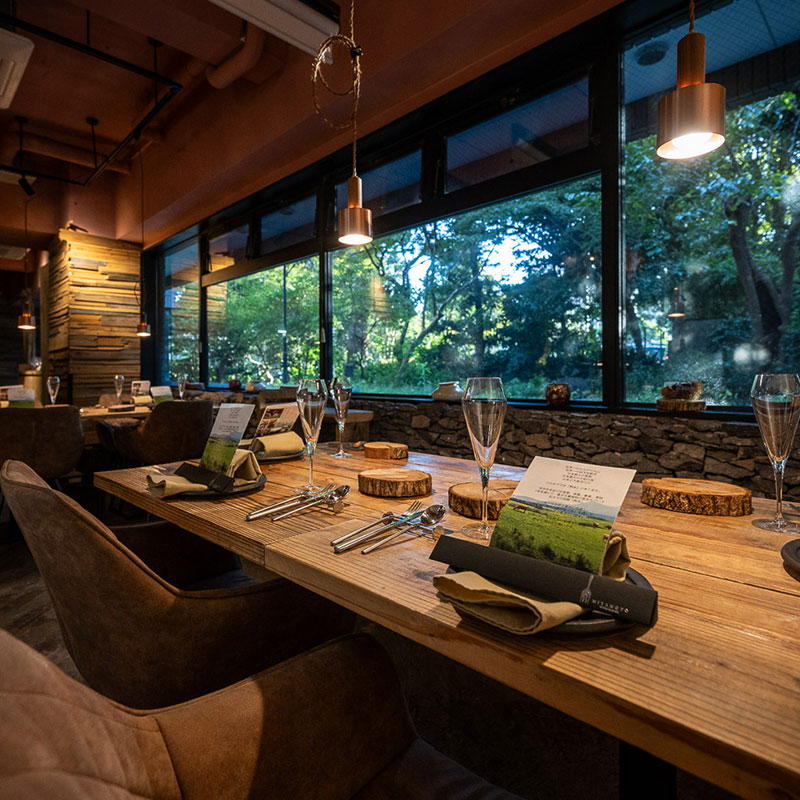
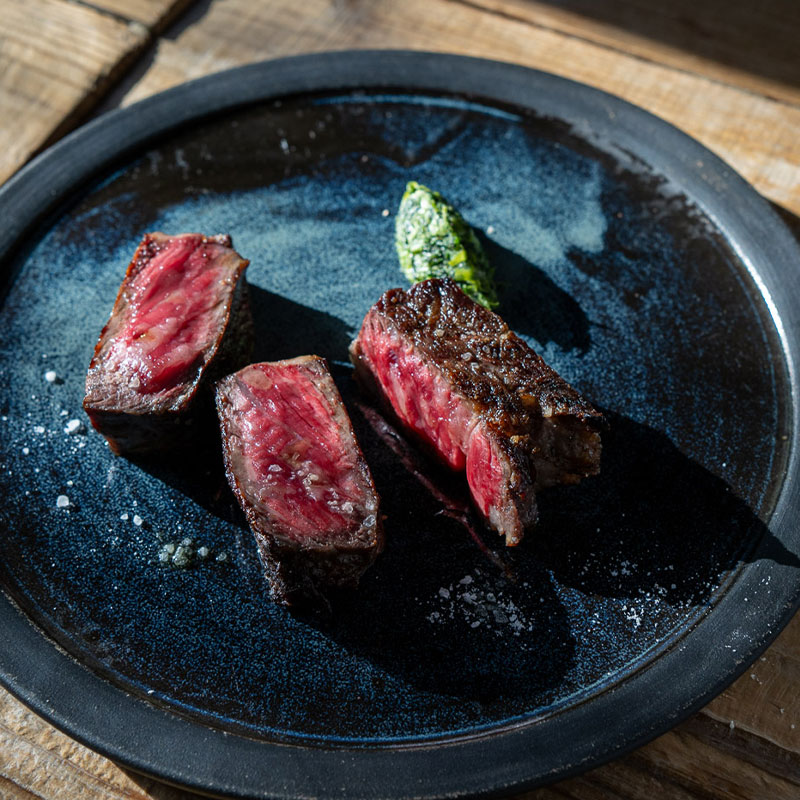
Using ingredients from Kumamoto, the restaurant offers dishes with a passionate Tuscan flavor.
Kumamoto is a miracle prefecture.
The last question I asked Chef Miyamoto was, “What kind of place is Kumamoto for you? He answered, “Kumamoto is a miracle prefecture for me.
Kumamoto is a miracle prefecture for me. There are the largest grasslands in Japan like Aso, cold mountainous areas where the temperature drops to minus 10 degrees Celsius in winter, and coral reefs in the Amakusa Sea. I feel that all of Japan’s nature and ecosystems are here. I believe that Kumamoto is a unique place, and I encourage tourists to experience the many faces of Kumamoto.
I, Enrico, who grew up in Rome, felt like I had a magical trip while in Kumamoto City. While experiencing Kumamoto’s rich nature and delicious food, I was able to feel the various regions of Italy where Mr. Miyamoto was trained. I felt that is the meaning of the name of this restaurant.
When you are in Kumamoto City, please visit “Antica Locanda Miyamoto” and feel Mr. Miyamoto’s memories of Italy and the “flame” made from Kumamoto’s ingredients, while leaning close to the simple and primitive act of “grilling,” the starting point of cooking. Please enjoy the dishes that are close to the simple and primitive act of “grilling,” which is the origin of cooking.






